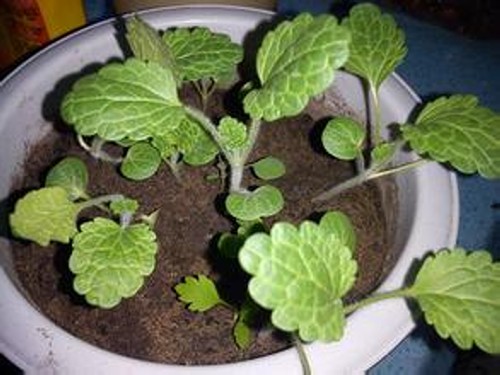Planting method of Ranunculus chinensis
Buttercup, also known as celery leaf peony, Persian buttercup, belongs to Ranunculaceae perennial bulb flowers. The flowers are large and beautiful, often planted under trees, in the lawn, and on the shady side of buildings. At the same time, they are also suitable for cut flowers or potted plants. The planting methods of buttercup are as follows:

[seed propagation]
Buttercup can be propagated by seeds. When flowers bloom, choose early and large flower heads to leave seeds, harvest shade and dry when they are mature, wrap them in clean waste paper, put them in a ventilated and dry place, and sow seeds in autumn and winter. Most of the plants can blossom in the second spring, and those who do not bloom need to be planted for another year. It can bloom in the third year. In addition, separate bulbs can be used to propagate. When the stems and leaves are completely withered and yellow, and when the underground stems are mature, they are dug up, dried and collected, and then planted in autumn and winter. Buttercups planted with bulbs can blossom in the second year.
[accelerating budding and raising seedlings]
Artificial germination should be carried out before planting, and it is appropriate to accelerate germination from mid-late October to early November in the south of the Yangtze River. The method is:
First select a large open basin or select an empty corner indoors as a sprouting bed, spread a layer of coarse sand about 3 cm thick, cover the bulbs with sand one by one, cover them with a layer of fine sand of more than 2 cm, and spray them with water. after that, open and check every 2 or 3 days, and keep the seedling bed moist without stagnant water. if rotten bulbs are found to be removed in time, the bulbs will take root and sprout one after another. After budding, it can be planted in a pot. Generally 12 cm diameter flowerpot, each pot planting 1-2 balls, good choice of different colors of varieties of the same pot, planting depth to the bud head slightly exposed soil surface is appropriate. Keep it in a sunny place after planting.
[water and fertilizer management]
Flower hair likes cool, avoid dampness and heat, and is more hardy. It grows well in well drained, loose, fertile and slightly alkaline soil. The potted soil can be prepared with 50% vegetable garden soil, 20% coal ash, 20% plant ash and 10% organic fertilizer. It grows slowly at the initial stage of planting, and only enters the stage of rapid growth when the spring weather turns warmer. At this time, it is necessary to apply thin liquid fertilizer based on phosphorus and potassium every 10-15 days. If there is enough fertilizer, the flowers are big, colorful and abundant. The florescence should be carefully managed and given sufficient light. Keep the potted soil moist and cut off the residual flowers in time. From May to June, as the temperature rises, the stems and leaves gradually wither and enter dormancy. Stop watering and move the flowerpot to a cool, dry and ventilated place.
Planting or potted plants need to choose a well-ventilated semi-shady environment, pay attention to often watering during the vigorous growth period, keep moist, apply dilute liquid fertilizer 1-2 times before flowering as topdressing, bloom luxuriantly, after summer, branches and leaves dry, plant dormancy, then the root should be dug out, air-dried and placed in an indoor ventilated and dry place to make it dormant, such as too wet, or left in the basin, easy to rot.
Autumn planting period after the Beginning of Autumn, the sooner the better, can promote the full growth of plants, the following spring flowering is good, but it is best to pot, and try to avoid high temperature and direct sunlight, otherwise the root is easy to rot.
Time: 2019-05-25 Click:
- Prev

Planting method of shell flower
Shell flower, also known as collar flower, elephant ear, is a 2012 herb of the genus Labiatae. It is native to western Asia. Plant height 35100cm, stem quadrangular, unbranched. Leaves opposite, cardioid-rounded, margin sparsely dentate; petiole nearly as long as leaves. Flowers white, Corolla lip-shaped; nutlets smooth
- Next

How to grow thousand-day red? Planting technique of thousand-day red
Thousand-day safflower is used in medicine, which has the effects of relieving cough and expectoration, relieving asthma, calming the liver and eyesight, mainly treating bronchial asthma, acute and chronic bronchitis, pertussis, pulmonary tuberculosis hemoptysis and so on. In addition, the thousand-day red flower period is long, the flower color is bright, it is an excellent ornamental flower in the garden, it is the common material of flower bed and flower mirror, and it doesn't fall after flowering.
Related
- Fuxing push coffee new agricultural production and marketing class: lack of small-scale processing plants
- Jujube rice field leisure farm deep ploughing Yilan for five years to create a space for organic food and play
- Nongyu Farm-A trial of organic papaya for brave women with advanced technology
- Four points for attention in the prevention and control of diseases and insect pests of edible fungi
- How to add nutrient solution to Edible Fungi
- Is there any good way to control edible fungus mites?
- Open Inoculation Technology of Edible Fungi
- Is there any clever way to use fertilizer for edible fungus in winter?
- What agents are used to kill the pathogens of edible fungi in the mushroom shed?
- Rapid drying of Edible Fungi

